How to Apply the Ethos of the Craftsman to Our Leadership
/This is not another article on leadership admonishing us to be more productive, relational, or visionary. There are too many of those. Instead, this is an article about how to apply the ethos and values of craftsmanship to our leadership.
I first ran across this concept in an inspiring article in the Art of Manliness blog.* I am borrowing heavily from that article. My contribution is providing examples and biblical references for tailoring the principles of the craftsman’s ethos to school leadership. The best place to begin is to quote the opening of the article from which mine is derived:
Across cultures and time, the archetype of the craftsman has represented man’s ability to create and has been the mark of mature manhood. He is homo faber – man the creator. Instead of passively consuming and letting things happen to him, the craftsman fashions the world to his liking and proactively shapes and influences it …
When we think of the archetypal craftsman, images of a bearded man clad in a leather apron and rolled-up sleeves, toiling away in his workshop producing beautiful and useful items comes to mind. What’s interesting is that the ancient Greeks had a much more inclusive idea of the craftsman than our modern conception. Besides masons, potters, and carpenters, the ancient Greeks included jobs now considered “knowledge professions” like doctors, legislators, and administrators under the craftsman label. Even the work of a father was considered a craft of sorts that required the same care and attention to detail as that of the carpenter. Indeed, the ancient Greeks believed that the values and ethos of craftsmanship were things all should seek to live by. In so doing, a man could achieve arete, or excellence, and thus experience eudaimonia (human flourishing), or a flourishing life … Below we take a look at how these overarching principles of the traditional craftsman can apply to all areas of your life, no matter your profession.
Brett McKay, the publisher of the AoM blog, lists nine principles of the craftsman:
- Do things well for the sake of doing them well
- Plan but not too much
- Measure twice, cut once
- Work with what you got
- Cultivate patience
- Let go of your ego
- Develop your practical wisdom
- Mastery brings meaning
- Find your workshop
Do Things Well for the Sake of Doing Them Well
This principle states what should be the primary motivation for our work. We are to do our work well not so we will be praised, not so we will be rewarded, and not so we will feel good about ourselves. While not bad in and of themselves, these motivations are subordinate to the more noble motivation of doing things well because doing so is intrinsically worthwhile, it is the right thing to do. “Fundamental to the code of craftsmanship,” writes Brett, “is the desire to do something well for its own sake.”
This is a noble motivation but even this is subordinate to the Christian’s ultimate motivations. There are three scripture verses that set forth the motives for our work:
So, whether you eat or drink, or whatever you do, do all to the glory of God. 1 Cor. 10:31
And whatever you do, in word or deed, do everything in the name of the Lord Jesus, giving thanks to God the Father through him. Col. 3:17
Whatever you do, work heartily, as for the Lord and not for men, knowing that from the Lord you will receive the inheritance as your reward. You are serving the Lord Christ. Col. 3:23–24
The quality of our work is to reflect well on God. It is also to be done as though we were doing it for Christ.
For example, in preparing a presentation, the motivation is not to do well so that our audience will be impressed with us; our motivation is to impress them with God. And, we should devote the same energy and attention to detail in preparing and delivering our presentation as we would if we knew Jesus was going to in the audience—because he will be.
Likewise, how we conduct a meeting, how we teach a class, how we make decisions, how we train staff, and how we craft an email are all to be done with such craftsmanship that God is honored and Christ would be pleased if he were on the receiving end of our work. Imagine Jesus sitting in the audience, our class, our meeting, or at his computer reading our email. Those images should shape the motives and quality of our work.
There are two examples that will serve to illustrate what craftsmanship in our work looks like—one from “old world” craftsmanship and one from the biography of Steve Jobs, founder of Apple:
Furniture Making
“Make every product better than it’s ever been done before. Make the parts you cannot see as well as the parts you can see. Use only the best materials, even for the most everyday items. Give the same attention to the smallest detail as you do to the largest. Design every item you make to last forever.” – Shaker Philosophy of Furniture Making
Computer Making
[Steve Jobs’s father] tried to pass along his love of mechanics and cars. “Steve, this is your workbench now,” he said as he marked off a section of the table in their garage. Jobs remembered being impressed by his father’s focus on craftsmanship. “I thought my dad’s sense of design was pretty good,” he said, “because he knew how to build anything … Fifty years later the fence [his father built] still surrounds the back and side yards of the house in Mountain View. As Jobs showed it off to me, he caressed the stockade panels and recalled a lesson that his father implanted deeply in him. It was important, his father said, to craft the backs of cabinets and fences properly, even though they were hidden. “He loved doing things right. He even cared about the look of the parts you couldn’t see” …
Jobs’s father had once taught him that a drive for perfection meant caring about the craftsmanship even of the parts unseen. Jobs applied that to the layout of the circuit board inside the Apple II. He rejected the initial design because the lines were not straight enough.
Plan (But Not Too Much)
With any project, the craftsman creates twice: first mentally and then physically. Before he sets chisel to stone or hammer to wood, the craftsman has already created his work in his mind. In other words, he plans how to bring out the object from the rough materials and tools before him.
On the other hand, while the craftsman understands the importance of planning, he isn’t over-fastidious about it. Instead of detailed blueprints, the master craftsman prefers the rough sketch because he knows that unforeseen problems (or opportunities) can arise once he’s actually working.
For any leader planning is critical. Properly crafted plans steer our schools in the right direction and ensure that we have allocated our physical, financial, and human resources for maximum impact. But for some, procrastination masquerades as planning. Plan well but don’t spend so much time planning that little time or energy is available for execution. It is much easier to turn an aircraft carrier when it is moving than when it is dead in the water. Plan but get moving.
Measure Twice, Cut Once
This is one of the simplest and most memorable maxims of craftsmen, although it’s not always easy to follow through with in your everyday life. Suffice it to say that while you should leave room in your plans for improvisation, when it comes to making decisions that you can’t take back, make sure you’ve studied and pondered the choice thoroughly before you make your “cut.”
During my career as a school leader I have had the privilege of starting several significant initiatives. Two stand out in my mind: starting a new Christian school from scratch and launching 1:1 computing programs in two schools, one in the late 1990s and one this year. I have followed the BS/BS model: “Build Slow, Build Solid.” It is far better to spend the time, attention, and energy preparing properly than to rush headlong into a project and then be faced with cleaning up the resulting mess.
The adage to “measure twice, cut once,” was taught to me by my father when I helped him build houses. He taught me that, “lumber is expensive. Before turning on the circular saw measure again—make sure of your measurements then, and only then, cut.”
There are a lot of applications to this principle but hiring is at the top of the list. It is far better to be thorough and careful in finding the right person for a position the first time than to be faced with cleaning up after a bad hire and to do it over and over for the same position. Take your time, be thorough, hire right. Measure twice, cut once.
Work With What You Got
The master craftsman understands that most times he’ll never have the ideal materials, tools, or environment to work with. Unforeseen knots are discovered in wood and hidden imperfections in stone are revealed. Instead of becoming frustrated by such curveballs, the master craftsman adjusts his plans and works these imperfections into his creation so that you’d never know they were there … Instead of seeing these constraints and contingencies as obstacles, see them as creative opportunities and incorporate them into your life as unique and interesting pieces of texture. Remember, some of history’s greatest men turned what could have been a weakness into a strength.
Do not use your lack of gifts or resources as an excuse for not being a craftsman. No one has everything he or she needs or desires. Personal abilities and school resources are always limited.
Instead of focusing on what you do not have, make the most of what you do have. This is consistent with Jesus’s parable of the talents—each steward was given a different amount. He was not accountable for how much he was given, he was accountable for what did or did not do with what he was given. This should be our attitude as leaders—what has God provided? Let’s make the most of it by being creative, by focusing on possibilities rather than on limitations.
Cultivate Patience
A good craftsman has the patience to stay with frustrating work, even when it takes longer than he originally thought. He avoids frustration by living by the following maxim: when something takes longer than you expect, stop fighting it and embrace it …
Us moderns have a perverse expectation that things should happen NOW. We want emails answered immediately and we even expect success to come right away … The reality is that things almost always take longer than expected, especially those things that are good and noble. So instead of fighting it, embrace it as the calm craftsman does. Life will become instantly more enjoyable and less stressful once you cultivate this virtue of patience.
Patience is a virtue often mentioned in the scriptures. Consider these examples:
Be patient in tribulation, be constant in prayer. Rom. 12:12
And we urge you, brothers, admonish the idle, encourage the fainthearted, help the weak, be patient with them all. 1 Thess. 5:14
Be patient, therefore, brothers, until the coming of the Lord. See how the farmer waits for the precious fruit of the earth, being patient about it, until it receives the early and the late rains. You also, be patient. James 5:7–8
We put no obstacle in anyone’s way, so that no fault may be found with our ministry, but as servants of God we commend ourselves in every way: by great endurance, in afflictions, hardships, calamities, beatings, imprisonments, riots, labors, sleepless nights, hunger; by purity, knowledge, patience, kindness, the Holy Spirit, genuine love. 2 Cor. 6:3–6
You, however, have followed my teaching, my conduct, my aim in life, my faith, my patience, my love, my steadfastness. 2 Tim. 3:10
I recently learned the value of patience. After nearly three years of planning I was ready to launch our 1:1 computing initiative called Learning Unleashed. My plan was to implement the program last January in grades 7–8 and this fall in grades 9–12. My board suggested another plan—use January through June to conduct a small pilot program in the seventh grade before deploying the entire program in the Junior High.
After three years of hard work and having successfully launched a similar program several years prior, I was convinced we were ready. The delay was not necessary. It was time to move forward.
Although frustrated, I decided that the biblical thing to do was to embrace the delay, graciously submit to the board’s advice, and to publicly support the board’s recommendation.
While we would have been successful with the earlier and larger rollout of the program, the pilot revealed a number of unanticipated issues that would have made the launch more difficult and frustrating than anticipated. The delay gave us the opportunity to correct these problems and to provide more training before we deployed more broadly. By being patient and embracing the delay, we ended up with a smoother and more effectively deployed program.
Let Go of Your Ego
This principle is so important and so well stated in the original article that I am going to quote it at length.
The craftsman willingly opens himself up to teaching, criticism, and judgment from his peers and clients because that’s the only way he can improve. He doesn’t take criticism personally because the craftsman is more concerned about doing good work than feeling good about his work. A true craftsman understands that nobody cares how he feels about his work. In the end he knows that the only question that matters is: “Does it work?”
Modern culture has indoctrinated us that it’s more important to feel good about our work than to actually do good work. Self-help and career books tell us that we should find work that feels “authentic.” School children are taught that the only thing that counts is their effort, not if their work is actually good or correct. Crawford calls this emphasis on feelings as opposed to results a consumer ethic as opposed to a craftsmanship ethic.
The problem with the consumer ethic is that it creates individuals with self-inflated and fragile egos who are unable to withstand the sometimes harsh criticisms and judgments that invariably come in life and in work. Clients and bosses don’t care if you felt authentic” when writing a memo or if you tried really hard on a project. All they care about are the results. In life, it often takes mistakes in order to get better. You can’t get better if no one ever points out your failings.
If you wish to become the best man you can be, you must rid yourself of the consumer ethic of feelings and replace it with the craftsmanship ethic of results. Does your creation work? Does it look good? Does it add something to the world? If not, seek feedback and use that criticism to improve your work.
I am going to be transparent. I don’t like to have my work critiqued. For whatever reason I have a high need to be and to feel competent. Anything that threatens my sense of competence produces anxiety and stress. Usually, the main threat to my sense of competence is criticism or “second guessing” of my decisions.
This attitude of resisting criticism, of allowing ego to blind us to our shortcomings, is wrong for both biblical and practical reasons.
Biblically, it is clear that pride is the fundamental underlying sin of human nature. Pride was the fountainhead of Satan’s rebellion resulting in his rejection from heaven. Pride was the cause of Adam’s and Eve’s sin.
All of the subsequent suffering, turmoil, and death in our world has its origin in pride. Pride is deadly. Pride kills careers. Pride kills marriages. Pride kills testimonies and effectiveness. Pride leads eventually to physical and spiritual death. And, pride stops us from learning and growing.
The antidote to pride is humility, exemplified by Christ (Phil. 2:3ff). The Bible tells us to be humble, to listen to the advice and counsel of others:
Pride goes before destruction, and a haughty spirit before a fall. It is better to be of a lowly spirit with the poor than to divide the spoil with the proud. Prov. 16:18–19
There are six things that the Lord hates, seven that are an abomination to him: haughty eyes … Prov. 6:16–19
Therefore it says, “God opposes the proud, but gives grace to the humble.” Submit yourselves therefore to God … Humble yourselves before the Lord, and he will exalt you. James 4:6–10
Practically, it is important to embrace the truth that there is “wisdom in many counselors.” (Prov. 24:5–6) One of the roles of a good counselor and friend is to point out our shortcomings. “Faithful are the wounds of a friend; profuse are the kisses of an enemy.” (Prov. 27:6) We need honest counselors and friends to show us our blind spots, faulty thinking, character flaws and weaknesses.
We need others to point out our shortcomings—there is no other way to improve. Failure to embrace the critiques and criticisms of others is to embrace mediocrity and pride—both of which are dishonoring to Christ and detrimental to us and our schools.
Develop Your Practical Wisdom
Through years of experience, the craftsman develops what Robert Greene calls a “masterly intuition.” He can sense problems and solutions by merely looking at an object or listening to it operate. I liken it to how a man will often know if there is something wrong with his car just by feeling the way it drives or hearing something subtle that wasn’t previously there …
Aristotle called this kind of intuition phronesis, or practical wisdom. The ancient philosopher believed that the phronesis was a virtue that all men should develop, not just carpenters or masons. Practical wisdom is what allows us to make good judgments when we face decisions when there’s no clear right or wrong answer. It gives us the ability ”to do the right thing, at the right time, for the right reason.” Aristotle argued that practical wisdom for everyday life develops the same way craftsmen develop theirs — through experience and trial and error.
School leaders make hundreds, if not thousands, of decisions every year. In making some of these decisions we will not have all of the facts. In many instances there will be no clear right or wrong answer. We are often faced with a Solomon like decision in which we must “cut the baby in half.”
To make wise decisions when you do not have all of the facts or when faced with ambiguity, follow these steps:
-
Pray earnestly for wisdom, which God has promised to provide.
-
Study the scriptures for principles to apply. God does not give wisdom in isolation, he generally provides much of it through his word.
-
Seek the counsel of godly, biblically literate, and experienced Christians.
-
Take time to gather as much information as possible and to ponder the applicable biblical principles and counsel received. Then make your decision.
-
Assess the impact of your decision and amend if possible and appropriate. At the very least if your decision proves to be less than perfect-learn from it just as the craftsman learns from his mistakes.
Mastery Brings Meaning
Mastery is the goal of the true craftsman. As an apprentice, the would-be craftsman devotes years of his life humbly submitting to quiet observation. He watches his master work and gives an attentive ear to his instructions. After years of passive observation, an apprentice begins experimenting his craft to determine his skill. Through years of trial and error, he slowly hones his skill to a sharp edge. Even when a craftsman has obtained the level of master, he continues to dedicate his life to constant improvement. He understands that by increasing his ability, he increases his value. By mastering his trade, the craftsman is better able to live by the craftsmanship ethic, which in turn allows him to feel deeper personal satisfaction, develop confidence, contribute to his community, and thus discover greater and greater meaning and fulfillment in his work.
In Drive, Daniel Pink highlights research that has shown that, contrary to popular belief, it’s not the type of work that we do that leads to personal fulfillment. Rather it’s mastery of our work (along with autonomy and purpose) that brings us satisfaction. If you feel like you’re lacking meaning in your work or in your life, follow the example of the craftsman by seeking mastery. If you’re a computer programmer, make it a goal to constantly improve your programming chops; if you’re a manager, read the latest management research and apply it in your daily work. By seeking mastery, you’ll increase your self-efficacy and your ability to leave a mark on the world.
Each of us have been given “natural” and spiritual gifts for use in serving others and glorifying the God whose image we bear. We have a two-fold responsibility—to use these gifts and to hone and cultivate them so that we become masters of our “trade.”
Paul instructs his young apprentice Timothy to improve his teaching gifts: “Until I come, devote yourself to the public reading of Scripture, to exhortation, to teaching. Do not neglect the gift you have, which was given you by prophecy when the council of elders laid their hands on you. Practice these things, immerse yourself in them, so that all may see your progress. (1 Tim. 4:13–15) In his second letter to his apprentice in the faith, Paul writes, “Do your best to present yourself to God as one approved, a worker who has no need to be ashamed, rightly handling the word of truth.” (2 Tim. 2:15)
The day we think we have arrived is the day we stop growing and our effectiveness begins to diminish. Keep learning. Keep growing. Keep striving. Keep improving. Become a master of your gifts so that you can serve others well and mentor those who will follow you.
Find Your Workshop
We often imagine the archetypal craftsman toiling alone in his shop, but historically, the vocation of a craftsman was and still is very social. When a master craftsman wanted to commune with his fellow masters, he’d head to the nearest guildhall where new insights were shared and policies governing the craft debated. And now, as then, a craftsman’s workshop is the real hub of his sociality. Here he mentors and teaches an apprentice or journeyman, works alongside his peers, and interacts with his clients.
The workshop and guildhall give the craftsman a sense of community, identity, and belonging. Crawford says this of the community that craftsmanship fosters:
“So my work situates me in a particular community. The narrow mechanical things I concern myself with are inscribed within a larger circle of meaning; they are in the service of an activity that we recognize as part of a life well lived.
Mimic the craftsman by finding your metaphorical workshop. Be intentional about forming life-long brotherhoods. Find your platoon of men that will hold you accountable to a code of honor that demands excellence and honesty in all you do.
Where is your workshop? Who are the master craftsmen who mentor you and hold you accountable for excellence in your work and nobility in your character?
Where is your sphere of social interaction and influence? If you are a teacher it is your classroom. If you are a coach it is the locker room, the field, the gym. If you are a school leader it is your office, the meeting room, the faculty lounge, the hallway, the auditorium…It is everywhere you work and interact with others. This is where you ply your trade.
What are our tools? They are God’s word, good research, a good book, a hallway conversation, a presentation, an email. Perhaps an article or book or a football.
We have many tools at our disposal. Our calling is be a master at using them to craft lives. Craftsmen, traditionally understood, work with wood, metal, stone, clay, etc. Our material is nothing less than eternal souls. C.S. Lewis wrote:
Every human being is in the process of becoming a noble being, noble beyond imagination; or else, alas, a vile being beyond redemption…The dullest and most uninteresting person you can talk to may one day be a creature which, if you saw it now, you would be strongly tempted to worship or else a horror and a corruption such as you now meet if at all only in a nightmare. There are no ordinary people. It is immortals that we joke with, work with, marry, snub, and exploit. Immortal horrors or everlasting splendors."
You and I are craftsmen. God has called us to work on eternal souls. To do this well requires the grace of God and the biblically informed ethos of the craftsman. By adopting and living the traditional values of the craftsman we will be a blessing to others, glorify God, advance His kingdom and as Brett notes, “find more personal fulfillment and meaning, enrich our family and community, and hammer, mold, and sculpt an indelible legacy as a [leader].
References:
Measure Twice, Cut Once: Applying the Ethos of the Craftsman to Our Everyday Lives by Brett, artofmanliness.com, July 3rd 2013
[Ref2]: Isaacson, Walter (2011–10–24). Steve Jobs (pp. 6, 74). Simon & Schuster. Kindle Edition.
[Ref3]: C. S. Lewis in his essay, “The Weight of Glory.”





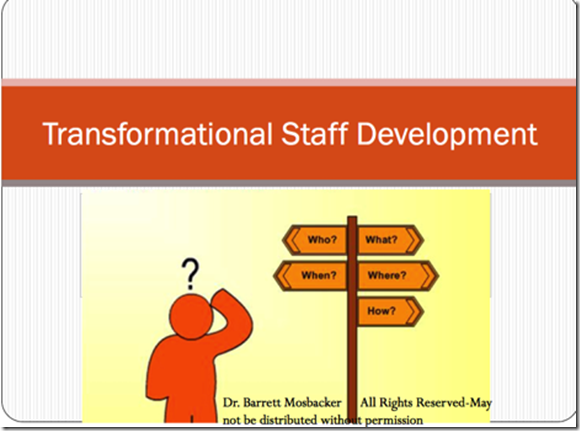
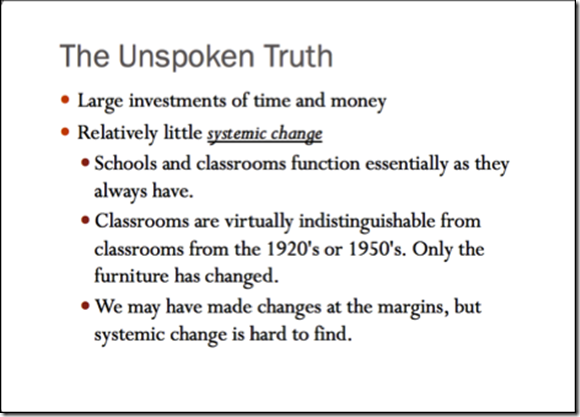
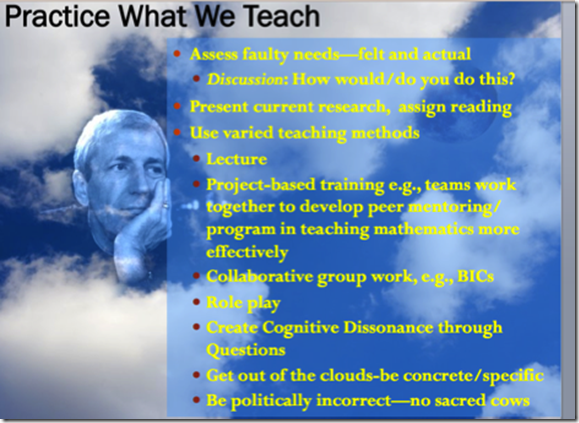





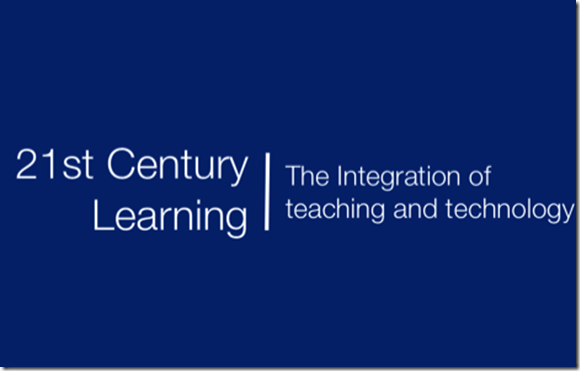
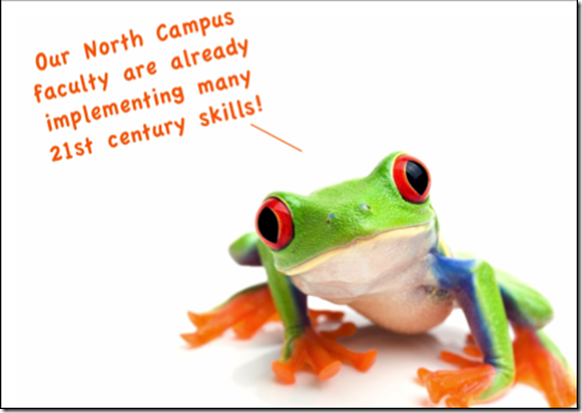





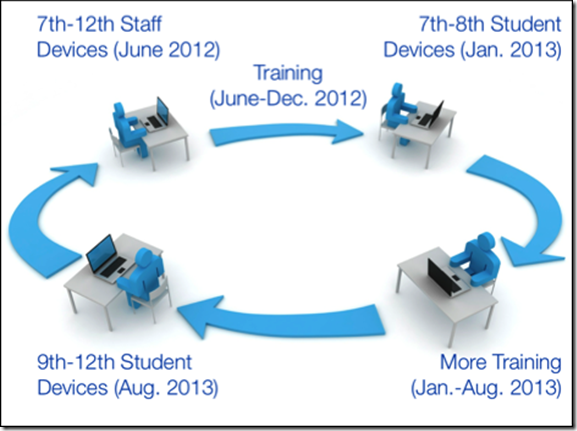
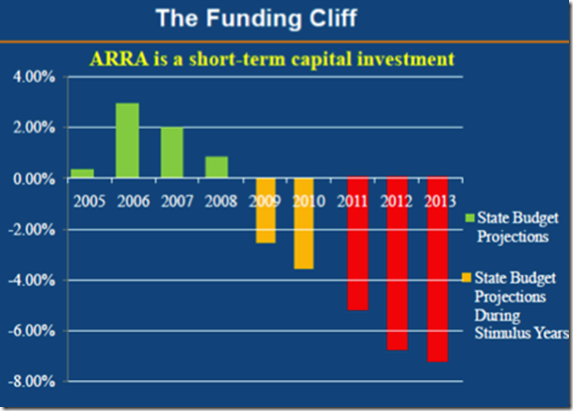
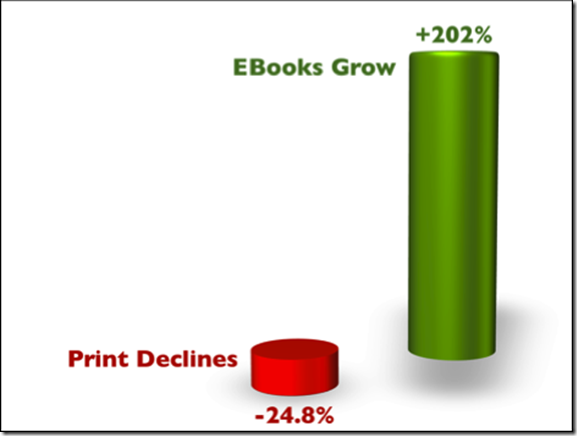


 I love dessert. One of my favorites is pecan pie. When I sit down to enjoy a piece of warm pecan pie Ala Mode there are two things that I am careful to do: 1) I eat slowly savoring each mouth watering morsel and 2) I am very careful not to waste a single crumb. My dog
I love dessert. One of my favorites is pecan pie. When I sit down to enjoy a piece of warm pecan pie Ala Mode there are two things that I am careful to do: 1) I eat slowly savoring each mouth watering morsel and 2) I am very careful not to waste a single crumb. My dog  can lick a plate clean but he has nothing over me when it comes to getting every last morsel of taste off of my plate! (yes that is my dog--like father like son!)
can lick a plate clean but he has nothing over me when it comes to getting every last morsel of taste off of my plate! (yes that is my dog--like father like son!) 


 God's gifting and calling in their lives even if fulfilling that calling means they will make less money and not climb the ladder of "success". For a summary of the definition of vocation as I am using it, click
God's gifting and calling in their lives even if fulfilling that calling means they will make less money and not climb the ladder of "success". For a summary of the definition of vocation as I am using it, click 
 Continuing with the technology illustration, consider that computers are great tools for problem solving, communication, modeling, research, and information storage and retrieval. As such, they can be used to aid man’s efforts to fight disease, speed communication, improve engineering designs and safety, make space exploration feasible, improve efficiency in the generation of power, and a whole host of activities too numerous to list here. All of these activities are redemptive in nature, i.e., they contribute to the alleviation of the consequences of the curse and promote the welfare of our community and world. Used in this way, computers become instruments of love.
Continuing with the technology illustration, consider that computers are great tools for problem solving, communication, modeling, research, and information storage and retrieval. As such, they can be used to aid man’s efforts to fight disease, speed communication, improve engineering designs and safety, make space exploration feasible, improve efficiency in the generation of power, and a whole host of activities too numerous to list here. All of these activities are redemptive in nature, i.e., they contribute to the alleviation of the consequences of the curse and promote the welfare of our community and world. Used in this way, computers become instruments of love.
 thirty-one years, even if reading continued day and night. Printing these letters out in regular font size on normal bond paper and binding them all together would result in a tower the height of the Washington Monument."
thirty-one years, even if reading continued day and night. Printing these letters out in regular font size on normal bond paper and binding them all together would result in a tower the height of the Washington Monument." education. Like raindrops falling into a pond, Christian educators shape lives and “drop” them into communities. Each life creates ripples—some small, some large—that radiate into the community affecting it for good or bad. Like a constant rain, the drops fall year after year all contributing individually and collectively to the national pool of talent and character that ultimately shapes our nation’s character and determines our national destiny.
education. Like raindrops falling into a pond, Christian educators shape lives and “drop” them into communities. Each life creates ripples—some small, some large—that radiate into the community affecting it for good or bad. Like a constant rain, the drops fall year after year all contributing individually and collectively to the national pool of talent and character that ultimately shapes our nation’s character and determines our national destiny.
 I find that I must guard myself against living like a "practical atheist." That is, if I am not diligent about prayer I can find myself working harder than I pray. If I do I may be productive but I will not bear fruit!
I find that I must guard myself against living like a "practical atheist." That is, if I am not diligent about prayer I can find myself working harder than I pray. If I do I may be productive but I will not bear fruit!  It is disingenuous and self-deluding to expect God to grant wisdom if we are not willing to gain the wisdom and understanding that He has already given to us in His Word. To neglect God's word is to neglect God's primary instrument for our sanctification and the source of divine wisdom and understanding. Move beyond the five-minute devotional--read and study God's word so that you nourish your own soul and have something to give to others.
It is disingenuous and self-deluding to expect God to grant wisdom if we are not willing to gain the wisdom and understanding that He has already given to us in His Word. To neglect God's word is to neglect God's primary instrument for our sanctification and the source of divine wisdom and understanding. Move beyond the five-minute devotional--read and study God's word so that you nourish your own soul and have something to give to others.  One cannot grow in wisdom, cannot abide in Christ, and cannot bear fruit apart from the Worship of God and the fellowship of His people. Just as an ember will grow cold when removed from the flame, so too our souls will grow cold if not nourished through worship and fellowship.
One cannot grow in wisdom, cannot abide in Christ, and cannot bear fruit apart from the Worship of God and the fellowship of His people. Just as an ember will grow cold when removed from the flame, so too our souls will grow cold if not nourished through worship and fellowship.
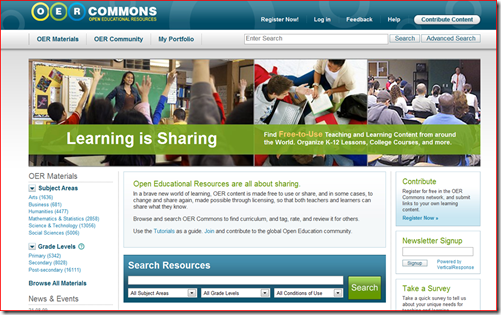
 closed their doors. Many who have not closed have lost students and laid off staff. More will close this year. Although a few Christian schools are thriving, most are not.
closed their doors. Many who have not closed have lost students and laid off staff. More will close this year. Although a few Christian schools are thriving, most are not.
 An
An  s are likely to be squeezed from two sides—an anemic economy with high unemployment (and potentially high inflation) and more vigorous competition from charter schools and distance learning options.
s are likely to be squeezed from two sides—an anemic economy with high unemployment (and potentially high inflation) and more vigorous competition from charter schools and distance learning options. I am not going to beat around the bush. We must do whatever it takes, provided it is biblical, to ensure that every classroom is staffed with a highly competent Christian teacher. We must dismiss, ethically and graciously, those who are unable or unwilling to learn and grow and who are merely adequate. We must stop the educational malpractice of having students educated by mediocre teachers using “grace” as a pretext for an unwillingness to make hard decisions. We do not have the right nor the liberty to make our students bear the educational cost of sitting under the instruction of ineffective or mediocre teachers. Period.
I am not going to beat around the bush. We must do whatever it takes, provided it is biblical, to ensure that every classroom is staffed with a highly competent Christian teacher. We must dismiss, ethically and graciously, those who are unable or unwilling to learn and grow and who are merely adequate. We must stop the educational malpractice of having students educated by mediocre teachers using “grace” as a pretext for an unwillingness to make hard decisions. We do not have the right nor the liberty to make our students bear the educational cost of sitting under the instruction of ineffective or mediocre teachers. Period. It sounds like a cliché but we need to be less reactive and more proactive as leaders. We need to look over the horizon in order to position our schools to take advantage of new opportunities and to meet new challenges.
It sounds like a cliché but we need to be less reactive and more proactive as leaders. We need to look over the horizon in order to position our schools to take advantage of new opportunities and to meet new challenges.  We strive to have a “Bias for Yes.” “Yes we Can!” (Sorry, I couldn’t resist!) “Yes we will.” “Yes, we will seriously consider that.”
We strive to have a “Bias for Yes.” “Yes we Can!” (Sorry, I couldn’t resist!) “Yes we will.” “Yes, we will seriously consider that.” 